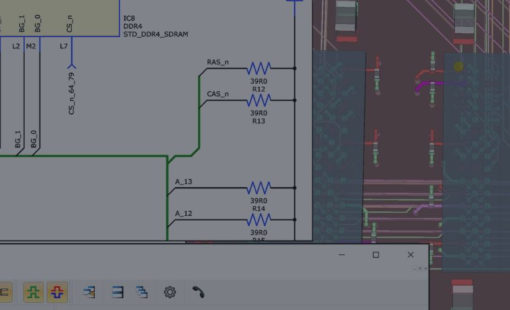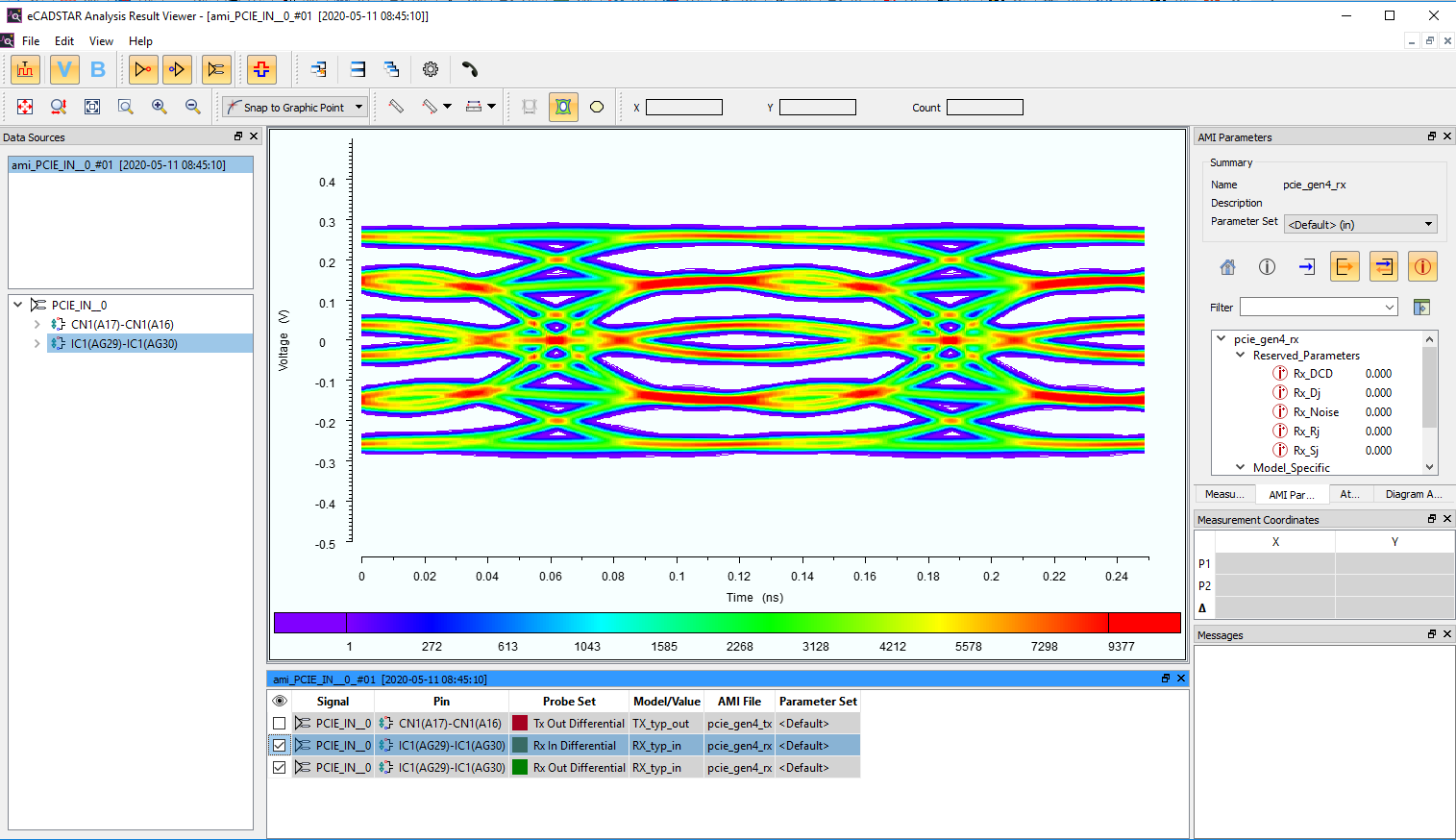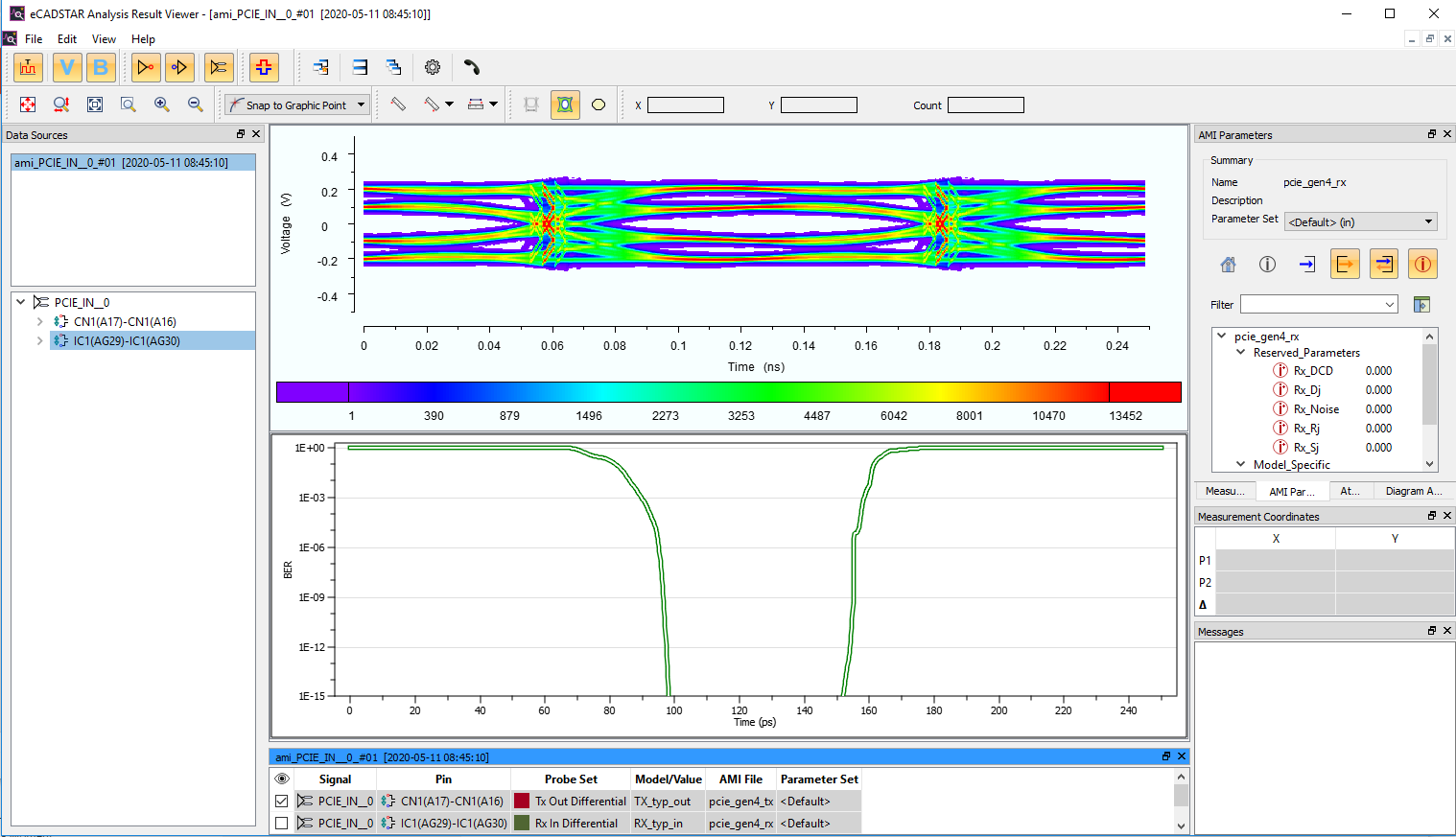IBIS-AMI: SIMULATION OF TRANSMISSION LINKS WITH VERY HIGH DATA TRANSMISSION RATES
IBIS-AMI (AMI stands for Algorithmic Model Interface) models allow you to adjust buffer parameters (pre-/de-emphasis, equalization, and more) to optimize I/O channels for maximum performance.
- Analyze SERDES channels (e.g. PCIe Express Gen3+, HDMI, SATA, USB, etc.) based on IBIS-AMI models.
- S-Parameter characterization of the channel.
- Eye diagram results, BER estimation, and bath-tub curves.
- Import and manage IBIS-AMI devices in the simulation library.
SERDES ANALYSIS
A traditional IBIS model is an electrical description of buffer driving and receiving characteristics, excluding any programmable behavior like that present in SERDES transceivers. These include PCI Express, USB, SATA, as well as emerging memory standards such as DDR5.
- eCADSTAR IBIS-AMI support addresses SERDES analysis needs (e.g. bit error rate, BER).
- It’s channel analysis for Linear Time-Invariant Systems (LTI).
- A SERDES analysis can take serious simulation time (many bits, minutes to hours).
- The result will be an eye diagram (you may add an Eye mask for compliance checks if desired) and a bathtub curve to check BER compliance.
AMI ANALYSIS RESULT WITH BATH TUB
RELATED PRODUCTS
eCADSTAR 2020 Release

- Pages
Perform what-if analysis to optimise high-speed performance, to solve and verify critical PCB design requirements.

- Pages
Testing and identifying the sources of signal integrity issues in a device, then fixing them, is a big challenge.

- Pages
It is easy to miss a serious power integrity or EMI issue. This can be as simple as using the wrong kind of via to take power from one layer to another or as subtle as a local resonance that stops I/O getting enough switching power.



